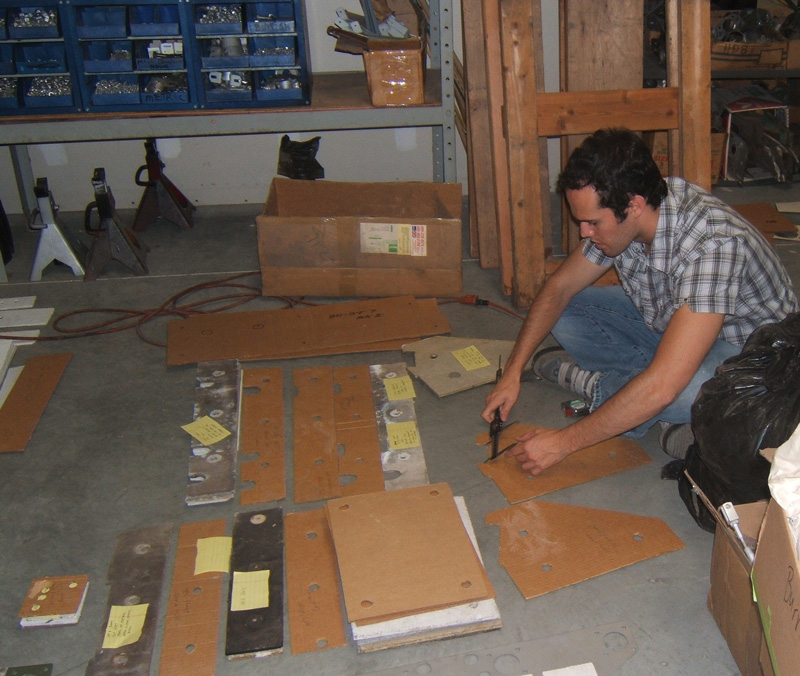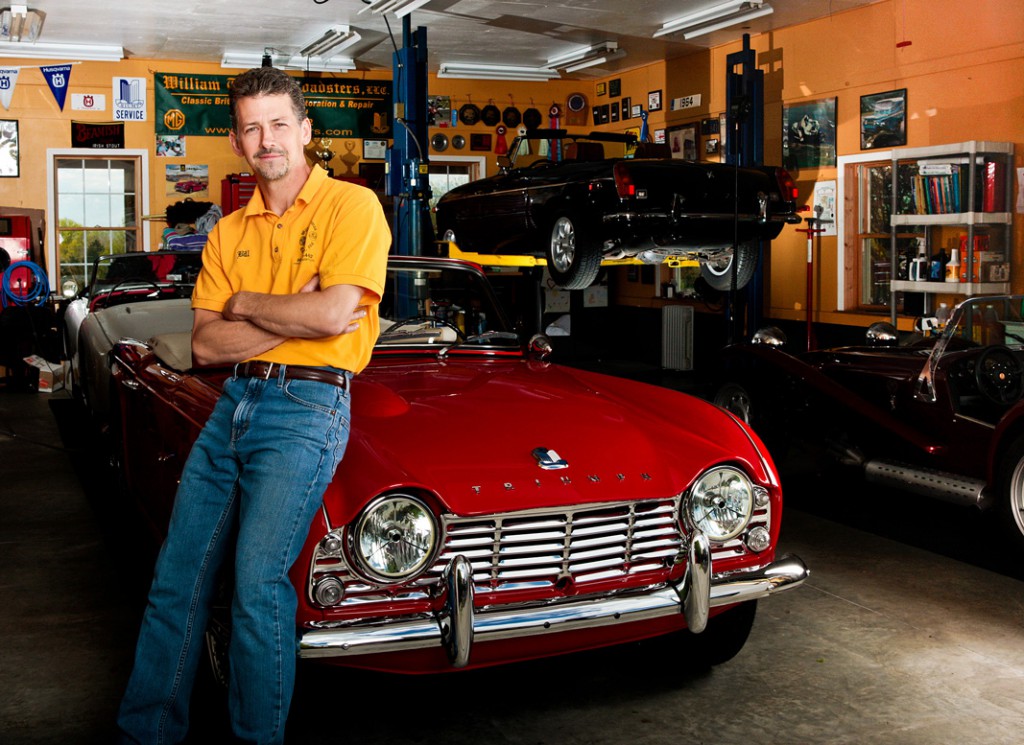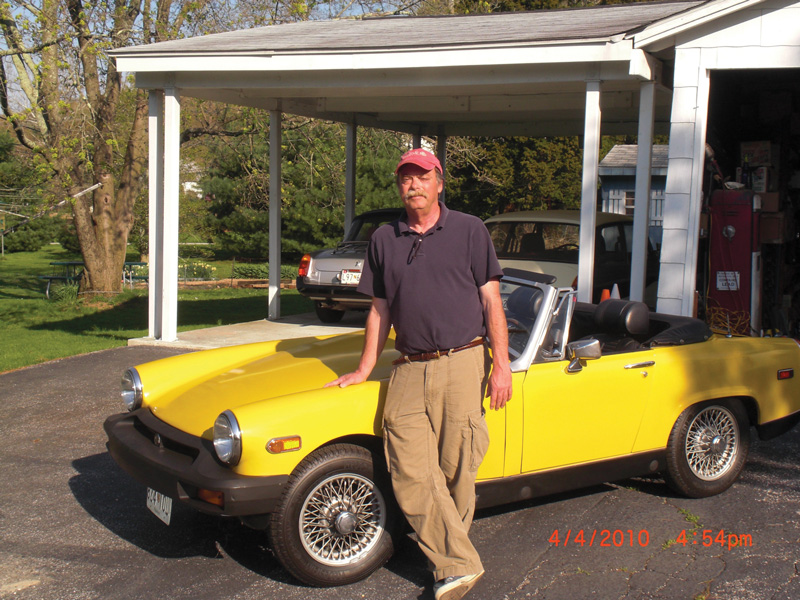Attention to detail yields proper kits for the big Healeys
We don’t always wind up where we intended to go. A couple of years back, we received a complaint about our heat shield kit for the Austin-Healey 100 (BN1 and BN2).

Moss tapped the experts and historic resources to develop a new heat shield kit for the big Healeys.
What started out as a simple question about the shape and dimensions of one of the heat shield panels took on a life of its own. Roger, patient man that he is, explained that the 100 had heat shield panels on the driver’s foot box only, and the later cars had one panel on the firewall. He directed me to pages 64 and 65 of the Concours Guide, and said he’d take a look at the pictures and the heat shield panel set I was sending him.
Roger took on this project with a good deal of energy. He spent time crawling around under several cars and tracing panels that were known to be original. He made a set of patterns and after trying them on several different cars, forwarded them to me. When compared to the panels we were selling, his patterns were different in a number of areas. Roger also had comments about the hardware.

When he graduated with an Engineering Degree from UCSB, I doubt Collin Dunner had this in mind as he pondered his career options… Altogether we spent several days in Eric's shop, and many more hours with his photo albums. We carefully bagged sets of original samples (they are made of asbestos) and sealed them before we handled them too much. Finding known good original samples was essential because the factory changed the design of these panels and the hardware specifications but did not change the part numbers.
Shop Floor Comparisons
With Roger’s patterns and all the heat shields we could find, we headed to Eric Grunden’s shop, Absolutely British, in Santa Maria, California. Eric has a reputation for restoring Austin-Healeys. He pulled out his own collection of patterns, used original panels and factory books. To try to make sense out of all the various patterns and parts, we decided to spread them out across the shop floor for comparison purposes.
Eric realized that the answers would probably be evident in his 30-year collection of photos taken of all his customers’ cars while in the shop. We spent hours poring over the pictures, setting aside those of the heat shields, then borrowing them for scanning.
We knew that simply making a few changes in what we had been selling wouldn’t work. We decided to start from scratch. We wanted to use a cement-based material that is favored by restoration shops, but had to find a parts producer that could work with it. We talked a company that makes wood products for us into giving it a try. They decided that between the dust and the pile of router bits they went through, they couldn’t make these panels in their shop.
CAD Design, Computer Cutting
Finally we found a company with computer-controlled cutting equipment claiming to cut anything. Collin Dunner, a Moss engineer, turned our patterns into SolidWorks CAD drawings and sent them off. Three weeks later we had samples. The edges were smooth and the parts matched the drawings exactly.
About that time, Roger brought up the heat shield hardware issue again. He raised two points. The nuts used to secure the panels were 10-32, common enough, but the English nuts are 5/16 inch across the flats, while American 10-32 hex nuts are 3/8 inch across the flats. The nuts are visible in the BN1 and BN2, and you can tell the difference just looking at them. We needed to use the English nuts.
Roger also pointed out that the large, thick flat washers used with the screws and nuts, 53K3151, were not available commercially. I contacted a specialty hardware supplier in England and arranged to have the washers made to go along with our proper English nuts.
Moss now offers what we feel are beyond a doubt the best heat shield kits for the big Healeys. They come complete with the correct nuts (for the 100), screws and the special flat washers. The kit for the 100 comes with incredibly detailed instructions courtesy of Roger. Moss is also pleased to offer a kit that is correct for the 100-6 and 3000 MK I, which was never before available.
Thinking back on how this all started, I am reminded of that phrase “a string on a sweater.” Next time, I may think twice before pulling on that loose thread.
By Michael Grant, Moss Technical Services








'The Healey Heat Shield Project' has 1 comment
July 20, 2020 @ 7:15 am Tim Simpson
I owned a 1954 BN1 with its original, rudimentary heat shields. The weather in Australia meant that in several years of ownership I put the hood up only once. On long drives in winter I found that a sleeping bag wrapped over my legs created a pocket of warmth up to my waist which with a thick leather coat was enough to make winter driving a pleasure.